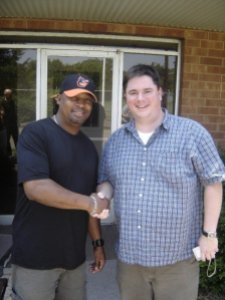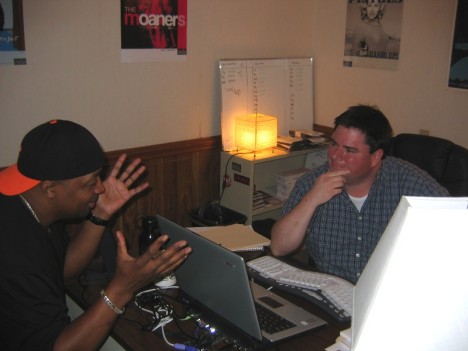
Wednesday was my last day at SAS as social media manager. I’ve written about my departure “two posts, actually: one on my SAS blog and one here” and the decision to give up a great job at a great company to go to New Marketing Labs. My old job was posted yesterday on the SAS jobs page “search job #10002098”, and, as I said on Twitter, I found it a bittersweet experience seeing it there. “I think that word may have confused some people; it was bittersweet because I’m leaving a great job and great people, but it was my decision and the parting was even more amicable than I could have hoped.”
Since the job posted, I’ve had quite a few people contact me to ask about the job through a variety of methods available to us these days: email, Twitter DM, Facebook message and Skype. “No one has called.” All of their questions have been along the same lines, and since the answers are positive for all involved, I thought I’d save time and answer them here.
Q: Is it a good job?
A: Absolutely. SAS is truly a great place to work, and this is a great job for the right person. It’s the best job I’ve ever had. It’s a big company, with all that entails, so it does require someone who can build consensus and motivate people. And you’ll be able to have a tremendous amount of influence on the future direction of social media at the company, both in the U.S. and overseas.
Q: Who does it report to? What’s she like?
A: The job reports to the estimable Kelly LeVoyer, for whom I have nothing but respect and affection. She’s a good manager, a good person and a SAS veteran, so she knows her way around the place. When I left, she gave me a bottle of 20-year old port. So, like that.
Q: What skills should the person have? What do you think is most important?
A: You need to be able to motivate people. You need to know how to bring virtual teams together and get the most out of people who don’t report to you. You need to be patient, because it’s a big company and, as with any big company, there are lots of moving parts in any decision. You need to be a good writer and communicator. You need to be a good public speaker and comfortable presenting to groups both inside and outside the company. And you need to be a good project manager. You’ll have lots of balls in the air and lots of deadlines.
Also, you need to have an analytical mind and a devotion to proving the bottom-line value of social media. If you’ve never given any thought to social media monitoring, measurement and analytics, you might be tweeting up the wrong tree.
Q: Do you just hang around on Facebook all day?
A: Paradoxically, most of the time I didn’t use social media tools to do my job more than anybody else. My job was primarily to work internally to develop strategies, policies and training. I communicated primarily via email, phone and meeting. I was on Twitter a lot, and I ran the Conversations and Connections blog “until Intern Extraordinaire Stacey Alexander more or less hijacked it”, but neither was a major part of my job. I wrote most of my blog posts at night, in that golden hour after everybody else has gone to sleep and I was still able to keep my eyes open.
That being said, if I were hiring my replacement I would cast a very critical eye on anyone who isn’t already blogging, tweeting, participating on Facebook and LinkedIn and hasn’t shot, edited and posted videos to YouTube. The job requires an understanding and level of comfort with the tools, because you’ll be teaching other people how to use them.
On the other hand, you don’t have to be mayor of 200 coffee shops on Foursquare and have a Tumblr account that autoposts when your dishwasher finishes the rinse cycle. You’ll need to keep your eyes on the horizon, but you’ll mostly be working with established social media channels for the foreseeable future.
Q: Do they already have somebody internal in mind?
A: Nope. It’s a sincere effort to find the best candidate, whether inside or outside of SAS.
Q: I’m thinking about applying…
A: Do it now. I suspect that, as with any SAS job, they’ve already been inundated with applications. Often SAS job postings come down after a few days because of the volume of replies.
Good luck!
photo by mylerdude

